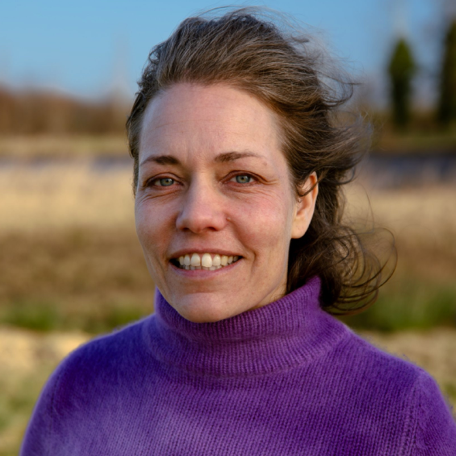
Eco-social designer and artist Henriëtte Waal commutes between the Netherlands and France. For a number of years now, she has been running the artistic research department at Atelier Luma, in Arles, in the south of France, an experimental design lab that falls under the Luma Foundation. At this lab, designers and artists can work on innovative solutions for regional challenges, using natural, renewable and locally-sourced materials. For instance, Atelier Luma helped develop a way to use crystallized salt from local salt pans, dyes extracted from invasive plants and residues from sunflower cultivation for the construction of the arts centre in Arles.
Henriette’s work has not gone unnoticed and was picked up far beyond Arles. The official opening of the Atelier Luma building, renovated using biomaterials from the area, was attended by two Fryslân visitors: artistic director Sjoerd Bootsma and Dorine Schreurs, head of funds and development of Arcadia. They wanted to ask her a question: Would she be willing to develop a similar experimental lab here, in Fryslân, working on transition issues for the landscape of the future?
“The fact that they had come all the way to the south of France for me and my work, confirmed to me that we have the same ideas and ambitions,” Henriette says about that first meeting. “If you work so closely with a landscape, you have to really experience that landscape and the materials that can be found there. Sjoerd and Dorine understood that, and not only wanted to talk to me, but also to see and feel on location how Atelier Luma is embedded in Arles and the region.”
Designing a future for the Veenweidegebied
Henriette has now been working as artistic director of the Frisian project for about a year. It is exciting for me to now go public for the first time. “New ideas are fragile and vulnerable,” she says. “They need time and space to grow and mature. Otherwise, it won’t sink in and before you know it, everything will be forced into an existing structure, while we are trying to explore new directions. I hope that – also together with our political partners – we can create a space where such an innovative project is given the time to develop optimally.”
The project has been given the name Het Veenweide Atelier. The peat soil in Fryslân poses one of the biggest challenges for a sustainable future. The Veenweidegebied (peatland meadow area) dominates a significant part of the Frisian landscape; a lot of people live and work in the area, but subsidence is causing increasing problems with water management and high CO2 emissions.
Recently, designers from the Veenweide Atelier got started on four eco-social design processes and developed the design in collaboration with e.g. local farmers, ecologists, policy officers and experts on peatland meadows. This collective approach and the collaboration with nature and local residents forms the basis of eco-social design. If you work together, applying a multidisciplinary manner approach, and are also open to input for external parties, you can come up with the most refreshing and holistic ideas, according to Henriette.
Nine transition tasks
Every project must take into account the biggest challenges Fryslân is currently facing. These have been summarized for the Veenweide Atelier by OOZE architects in the form of a “homework list” comprising nine transition tasks: peat, water, pollution, biodiversity, energy transition, new economy, heritage, housing and foundations. “The Veenweidegebied is an area in crisis,” says Henriette. “But crisis also creates opportunities. Because when everything still works well, there is little urge to innovate. This makes crisis areas also the best areas for innovation.”
Hope for the future
The hope for the future is that the Veenweide Atelier will grow into a permanent dynamic lab for design and inspiration. Where designers use their uncertainty skills, their imagination and their creativity to shape a new relationship with the peatland landscape, together with residents, governments, knowledge institutes, businesses and social organizations. For instance, a farmer might be inspired to grow new crops that store carbon and prevent CO2 emissions, that are suitable for use in ecologically responsible construction. Or we can experience that extracting dyes from microorganisms growing on waste streams works really well.
Henriette: “If you can experience something on a small scale, it makes it easier to visualize it on a larger scale. With the Veenweide Atelier we want to offer people the room and opportunity to feel and get a new, hopeful vision of the future.”